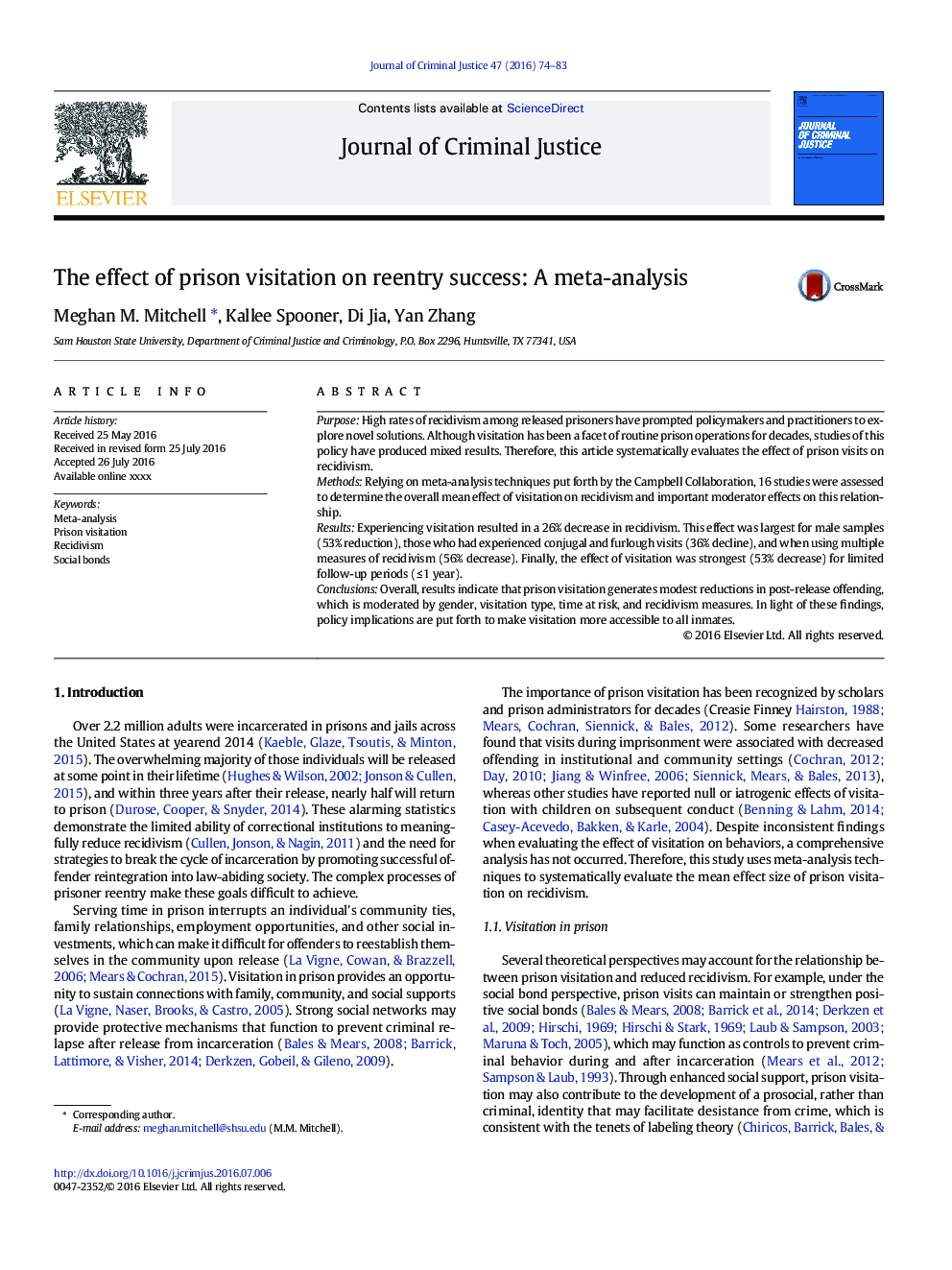| Article ID | Journal | Published Year | Pages | File Type |
|---|---|---|---|---|
| 882610 | Journal of Criminal Justice | 2016 | 10 Pages |
•Meta-analyses demonstrate that visitation has a 26% reduction on recidivism.•Visitation reduces post-release convictions and reincarceration, but has no effect on arrest.•The effect of visitation on reduced recidivism may weaken after numerous years.•The influence of visitation on recidivism varies by gender.
PurposeHigh rates of recidivism among released prisoners have prompted policymakers and practitioners to explore novel solutions. Although visitation has been a facet of routine prison operations for decades, studies of this policy have produced mixed results. Therefore, this article systematically evaluates the effect of prison visits on recidivism.MethodsRelying on meta-analysis techniques put forth by the Campbell Collaboration, 16 studies were assessed to determine the overall mean effect of visitation on recidivism and important moderator effects on this relationship.ResultsExperiencing visitation resulted in a 26% decrease in recidivism. This effect was largest for male samples (53% reduction), those who had experienced conjugal and furlough visits (36% decline), and when using multiple measures of recidivism (56% decrease). Finally, the effect of visitation was strongest (53% decrease) for limited follow-up periods (≤ 1 year).ConclusionsOverall, results indicate that prison visitation generates modest reductions in post-release offending, which is moderated by gender, visitation type, time at risk, and recidivism measures. In light of these findings, policy implications are put forth to make visitation more accessible to all inmates.
